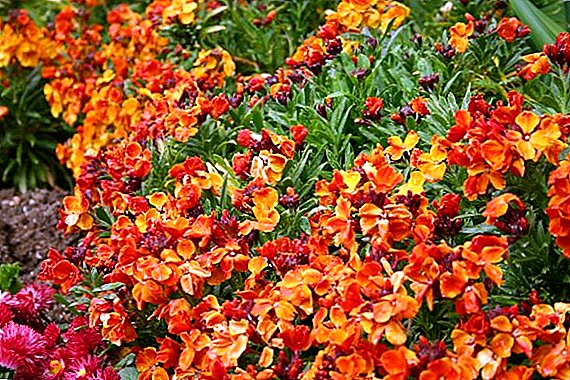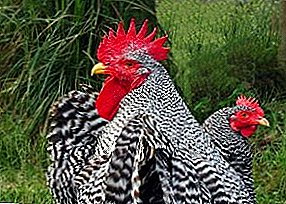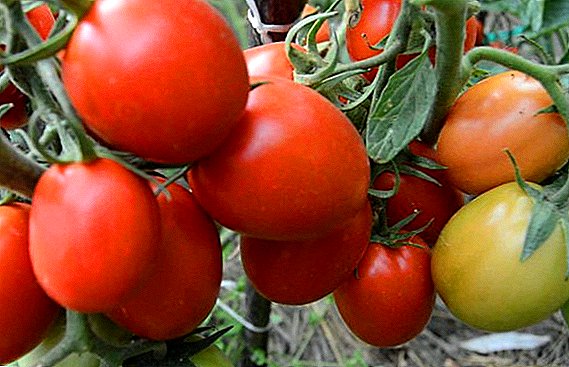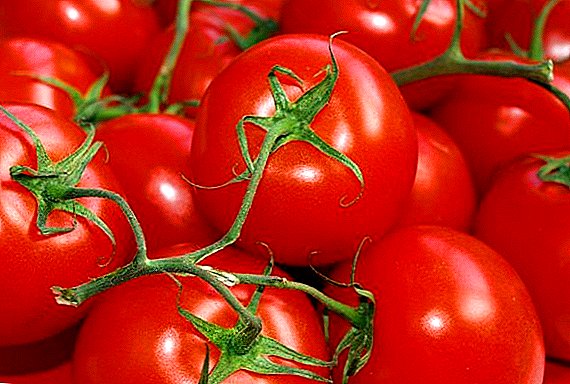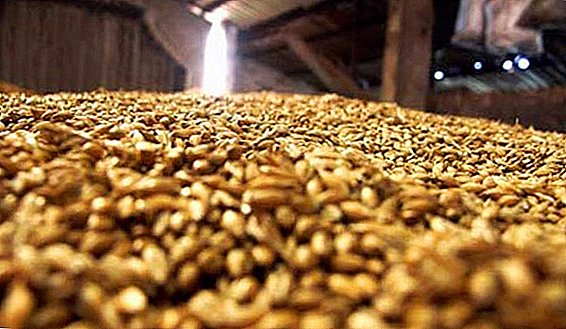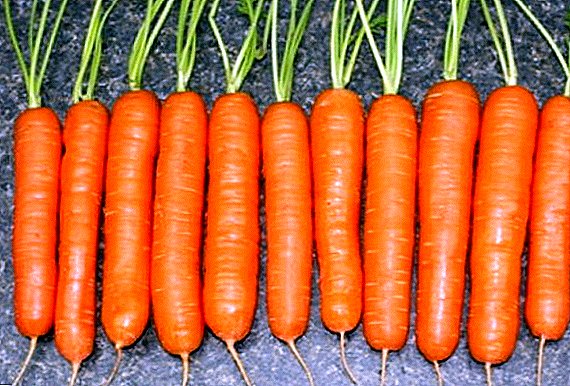 Carrots are a favorite, popular, and healthy vegetable. Today there are many varieties with different characteristics. The article will talk about the variety carrots "Tushon", we will give his description, tips on sowing and care, photos of what grows with all the recommendations.
Carrots are a favorite, popular, and healthy vegetable. Today there are many varieties with different characteristics. The article will talk about the variety carrots "Tushon", we will give his description, tips on sowing and care, photos of what grows with all the recommendations.
Description and photo
"Tushon" - it is an early ripe grade of carrots. Refers to the Amsterdam cultivar. The form of "Tushon" is cylindrical, smooth, eyes almost invisible. The length of the root is 15-20 cm. It has tender and sweet flesh. It is intended for cultivation in an open ground. Resistant to temperature changes. For ripening takes about 3 months after sowing. Treats universal grades and is used in cookery, suitable for use in raw form, recommended for baby food. 
We advise you to read about such varieties of carrots as: "Nantes", "Samson", "Shantane 2461", purple and black carrots.
Characteristics of a variety
- Fruits are cylindrical in shape.
- Productivity 4-5 kg / sq. m
- Maturing term 80-90 days.
- Sugar content is 6-8%.
- The content of carotene 11,5-11,9%.
Advantages and disadvantages
Gardeners love "Tushon" for such traits:
- high and constant yield;
- resistance to disease and cracking of fruits;
- short term ripening;
- Good appearance and sweet taste.
- Of the minuses can be identified unless a short shelf life.

The choice of location and time for cultivation
So, how to grow this wonderful vegetable?
Lighting and location
To create beds under the "Tushon", select an open and sunny place. Shadow slows growth, so it is undesirable for Tushon to grow under trees or against the walls of buildings.
Did you know? For the successful growth of carrots should be taken into account and the culture that grew in this place last season. The best predecessor is considered to be potatoes, onions, cucumbers.
Soil type
The soil should be loose and well drained. Best of all, the root crop will feel on the eaves-on-earth and loams. If your land is heavy and clay, then it would be nice to add sand and sawdust there to ease it. 
When to start landing?
The term of sowing can be calculated, taking into account the term of ripening.
The optimal time for sowing is March and April.
Important! Carrots can withstand frosts of up to 3 degrees, so if a warm spring is expected, then it can be planted in February windows.
Sowing seeds
Now let's talk directly about the seed itself.
Preparation of planting material
Before sowing you need to prepare the seeds themselves. It is best to soak them for a day in water or any accelerator of growth. For even distribution of seeds in the beds, mix them with sand in a 2: 1 ratio. 
Did you know? There is a legend that during the years of World War II, the British first developed a night vision radar, so their planes could destroy German bombers at night. In order to keep their "know-how" in secret as long as possible, the British Air Force spread the information that all their pilots follow a special carrot diet that allows them to see better at night.
Another option is to pre-stick the seeds on toilet paper. Starch is suitable as an adhesive. Soak these seeds will not work, so after sowing they must be very rich to water.
Sowing scheme
Seeds should be sown in rows, to a depth of 2-3 cm. Try to maintain a distance between seeds of 2 cm. In this way, you can avoid thinning heavily thickened crops.
Immediately after sowing, be sure to water the beds.
To ensure optimal conditions for growth and accelerate germination, it is worthwhile to mulch the beds. Having filled carrots with hay, straw, peat, compost, you will save crops from weathering, you will be able to water them less often. In the future, the remaining covering material will serve as additional fertilizer.
Good predecessors for carrots are - plants of the family solanaceous (tomatoes, potatoes), pumpkin (cucumbers, zucchini), legumes (beans, beans). Do not fit the plots from under crops with similar diseases and pests, these include: dill, parsley, parsnip and cumin.
Grade Care
Care is watering, thinning, loosening.
The most important procedure, of course, is watering. Abundant, but not very frequent, watering will help grow large and sweet carrots. 
Important! Surface irrigation provokes an increase in hairiness and the formation of an uneven shape of root crops.
Before harvesting, when the carrots are already formed, you can stop watering.
The next important operation is thinning. Dense thickets inhibit the development of root crops, and carrots turn out thin and frail. Therefore, it is necessary to pull out extra plants. Produce it in two stages. First, the distance between plants is adjusted to 12 cm (for large varieties - up to 15 cm). Then you need to bring this distance to 22-25 cm.
Another procedure - loosening. Loosen can be simultaneously with weeding and thinning, and after watering. Providing air access to the roots, you can get good and strong roots.
Harvest
Cleaning is done as the carrots ripen. When the roots reach maturity, juice will be gathered, they will become large - carefully dig them out, trying not to damage or cut.  Clean the collected carrots from the ground, rinse and put to dry in a well-ventilated place.
Clean the collected carrots from the ground, rinse and put to dry in a well-ventilated place.
"Tushon" can not be stored for very long. So try to immediately put fresh carrots in the case.


